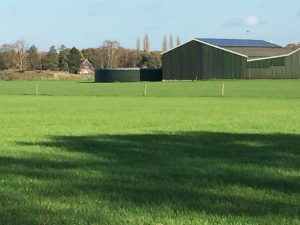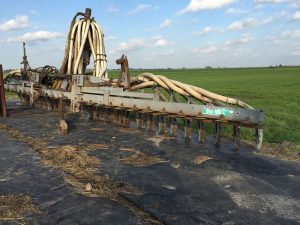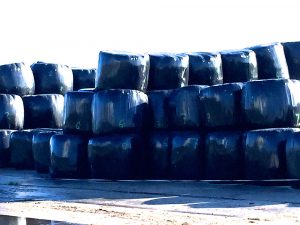Cows and Crops: Waste Not — Want Not
By Rick Kersbergen, Extension Professor, University of Maine Cooperative Extension, richard.kersbergen@maine.edu
 I always wondered about my parent’s obsession with tidiness and frugality. My parents emigrated from the Netherlands and moved to the US with my brother and sister in 1955. I was born a few years later. While I definitely inherited the frugality genes, the tidiness gene must be a recessive trait that was lost!
I always wondered about my parent’s obsession with tidiness and frugality. My parents emigrated from the Netherlands and moved to the US with my brother and sister in 1955. I was born a few years later. While I definitely inherited the frugality genes, the tidiness gene must be a recessive trait that was lost!
When I visited farms in the Netherlands and traveled throughout the countryside, my first impression of the dairy farms was one of cleanliness. Barnyards were exceptionally clean and neat, with little to no equipment or debris to be seen by passing motorists or visitors. Some of the lack of equipment may be due to the fact that many farms have custom harvesters manage the field harvest eliminating the need for multiple tractors and equipment.

The other striking feature is the lack of manure — well, absent to the view of the general public. Manure storage is primarily done with storages under the barns. If above ground storages are used, the majority of them are covered structures to limit ammonia emissions. Manure spreading is also not “visible” as most farms are required to inject their manure rather than to spread on the surface. Even grass pastures and hayfields are spread with shallow injection and are designed to limit any damage to the existing sod and conserve nitrogen.
With over 16 million people and 9 million cows (realize that the Netherlands is half the size of Maine!), land availability is quite valuable. Almost every bit of available crop ground is used, right up to the edges of the canals and ditch waterways. Much of the grass ground that is used for harvesting feed for the cows in the summer becomes sheep pasture in the fall and winter. These sheep with “golden hooves” graze the perennial ryegrass to keep it short through the winter without damaging the sod, even in the wet fall and winter.

Feed harvest is intense. Since much of the concentrate feed (corn and soybean meal) is imported from South America through the shipping port of Rotterdam, forage quality is critical for economic success. Many fields are cut 6 or 7 times (See picture of round bales with “ 6 and 7” written on them) a summer! (Yes, they have a slightly longer growing season.) The intense harvest schedule assures quality feed so as to be able to reduce the amount of concentrate they need to purchase.
Finally, bunker silo management is such that there is little to no waste. This is something many Maine farms should evaluate concerning their own management techniques. Rarely did I see any wasted or spoiled feed from the silos. Bunkers are covered with two layers of plastic and an additional canvas cover (to keep birds from damaging the plastic). Silos are often covered with 6-7 inches of soil to weight down the cover and eliminate oxygen infiltration. Edges are sealed with sandbags to keep water from infiltrating into the silo. Feed is removed using cutters that keep the face of the bunker straight and clean and eliminate the potential for air getting into the remaining feed. . These cutters often remove “blocks” of feed that is transported to a mixer wagon or other feeding system without oxygen infiltration. Finally, the face of the silos are covered after removing feed to keep birds, oxygen and water from entering the silo and to keep the face from heating up and degrading the quality of the remaining feed.
- Bunker silo covered with soil.
- Silage removal tool.
So now I have a better understanding concerning my frugal (my boys say “cheap”) ways and how I came to it naturally. If I could only find my tidiness heritage, then I might be able to find something in my office!


